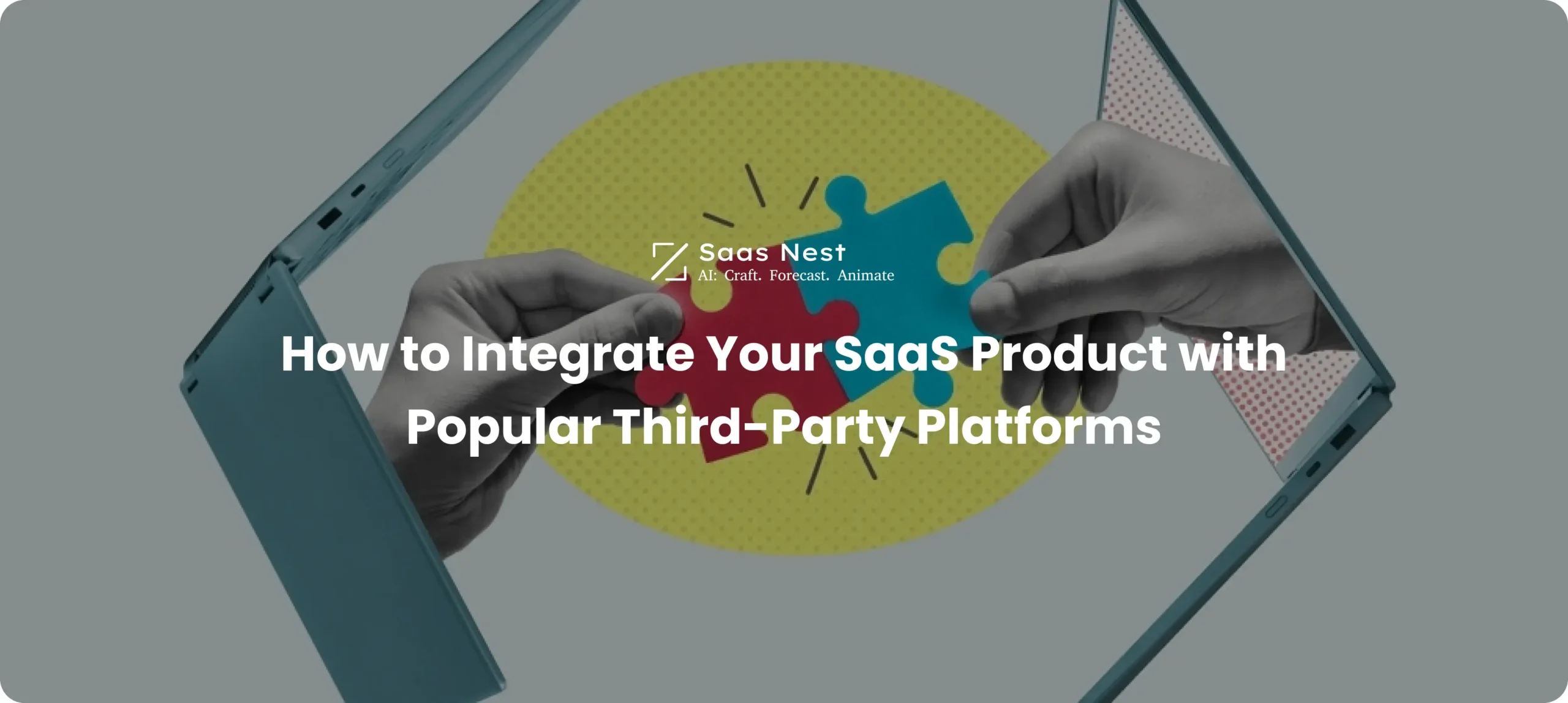
How to Integrate Your SaaS Product with Popular Third-Party Platforms
In the competitive SaaS landscape, seamless integration is no longer a luxury, but a necessity. Customers expect their software tools to work together harmoniously, creating a streamlined and efficient workflow. Integrating your SaaS product with popular third-party platforms not only enhances user experience but also expands your product’s capabilities and reach.
Why Integration Matters for SaaS Products
- Enhanced User Experience
Integrations eliminate data silos and manual data transfer, allowing users to access and manage information from multiple platforms within a single interface.

- Increased Customer Adoption and Retention
By offering seamless integrations with widely used tools, you make your product more valuable and sticky, leading to higher customer satisfaction and retention rates.
- Expanded Market Reach
Integrations allow you to tap into the user bases of other platforms, expanding your potential customer base and opening up new revenue streams.
- Competitive Advantage
Offering robust integrations sets your product apart from competitors and positions you as a leader in your industry.
- Improved Product Functionality
Integrations enable you to leverage the strengths of other platforms, adding new features and functionalities to your own product.
Also read: The Importance of Customer Success in SaaS
Key Steps to Integrating Your SaaS Product
- Identify Target Platforms
Begin by strategically identifying target platforms. Conduct thorough market research to pinpoint popular and relevant tools. Analyze customer feedback and feature requests to precisely understand desired integrations. Prioritize platforms that complement your product’s functionality, enhancing features and offering synergistic benefits. This ensures valuable integrations that directly address user needs and improve overall experience.
- Understand API Documentation
Thoroughly review the target platform’s API documentation, meticulously analyzing authentication protocols, data formats, rate limits, and error handling procedures. Precisely identify the necessary API endpoints to facilitate your integration. This comprehensive understanding of the platform’s capabilities and limitations ensures a robust and efficient integration process, minimizing potential development hurdles.

- Choose an Integration Method
- Direct API Integration
This involves directly connecting your product to the target platform’s API. This method offers the most flexibility and control but requires significant development effort.
- Integration Platforms as a Service (iPaaS)
iPaaS platforms like Zapier, Integromat (Make), and Workato provide pre-built connectors and workflows, simplifying the integration process. This method is ideal for quick and easy integrations.
- Embedded Integrations
This method embeds the target platform’s functionality directly into your application.
- Webhooks
Webhooks allow your product to receive real-time notifications from the target platform when specific events occur. This method is useful for building event-driven integrations.
- Develop the Integration
Developing the integration requires meticulous attention to API best practices. Secure authentication and robust error handling are paramount. Rigorous testing ensures reliable functionality across diverse scenarios. Prioritize performance optimization and scalability to handle substantial data volumes and user requests efficiently. This approach guarantees a seamless and dependable integration experience, fostering user trust and satisfaction.
- Test and Validate
Rigorous testing and validation are crucial. Conduct thorough integration tests within a staging environment, meticulously simulating real-world usage to pinpoint and rectify potential issues. Incorporate beta testers to gather valuable feedback, ensuring the integration not only functions correctly but also aligns with user expectations, guaranteeing a seamless and satisfactory experience upon deployment.
- Deploy and Monitor
Upon successful testing, deploy the integration to your production environment. Continuous monitoring is essential, tracking performance metrics to identify potential issues. Employ robust logging and alerting mechanisms to meticulously track errors, promptly addressing any disruptions. This ensures optimal uptime and a seamless user experience, maintaining the integration’s reliability and stability.
- Provide Clear Documentation and Support
Essential to successful integration is comprehensive documentation and robust support. Craft detailed guides explaining integration usage and provide clear setup instructions. Offer prompt, helpful support for users encountering issues. This ensures smooth adoption, reduces frustration, and builds trust, fostering a positive user experience and maximizing integration effectiveness.
- Promote Your Integrations
Actively promote integrations by featuring them on your website, marketing, and documentation. Craft compelling blog posts and videos to demonstrate their value. Strengthen partnerships by co-marketing with integrated platforms, amplifying reach, and showcasing the enhanced functionality to a wider audience.
Best Practices for SaaS Integrations
- Prioritize User Experience
Ensure that integrations are seamless and intuitive for users.
- Security First
Implement robust security measures to protect user data and prevent unauthorized access.
- Scalability
Design integrations to handle a growing volume of data and requests.
- Maintainability
Write clean, well-documented code to facilitate future maintenance and updates.
- Error Handling
Implement robust error handling to gracefully handle unexpected situations.
- Versioning
Use API versioning to ensure backward compatibility and prevent breaking changes.

- Rate Limiting
Respect the target platform’s rate limits to avoid being throttled.
- Data Mapping
Carefully map data fields between your product and the target platform to ensure data consistency.
- Regular Updates
Stay up-to-date with the target platform’s API changes and update your integration accordingly.
Conclusion
Integrating your SaaS product with popular third-party platforms is a strategic move that can significantly enhance user experience, expand your market reach, and drive business growth. By following the steps outlined in this guide and adhering to best practices, you can create seamless and valuable integrations that set your product apart from the competition. In a world where data is king and workflows are increasingly interconnected, integrations are no longer optional—they are essential for success.